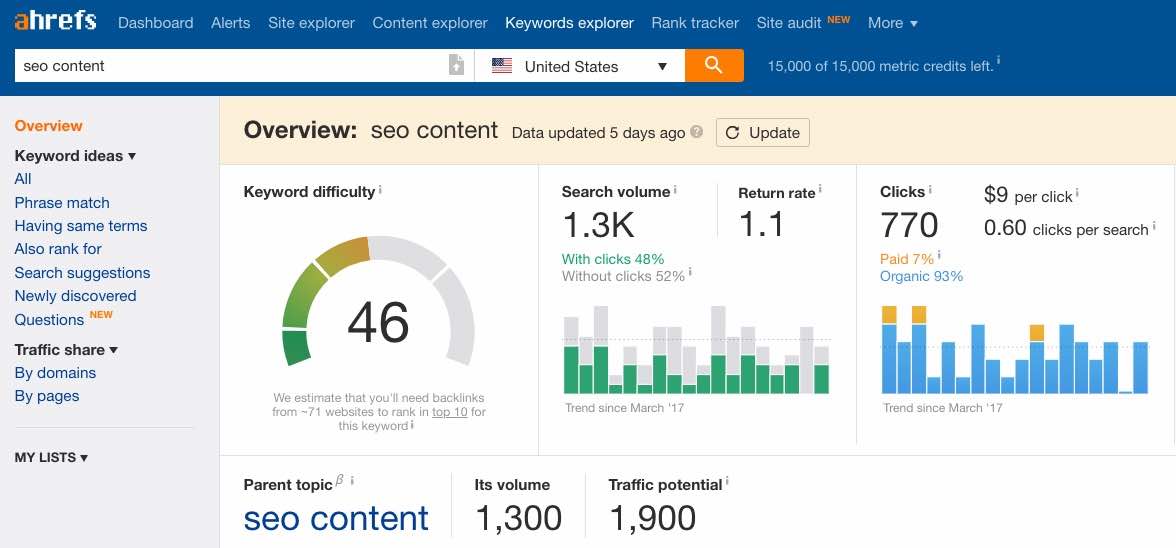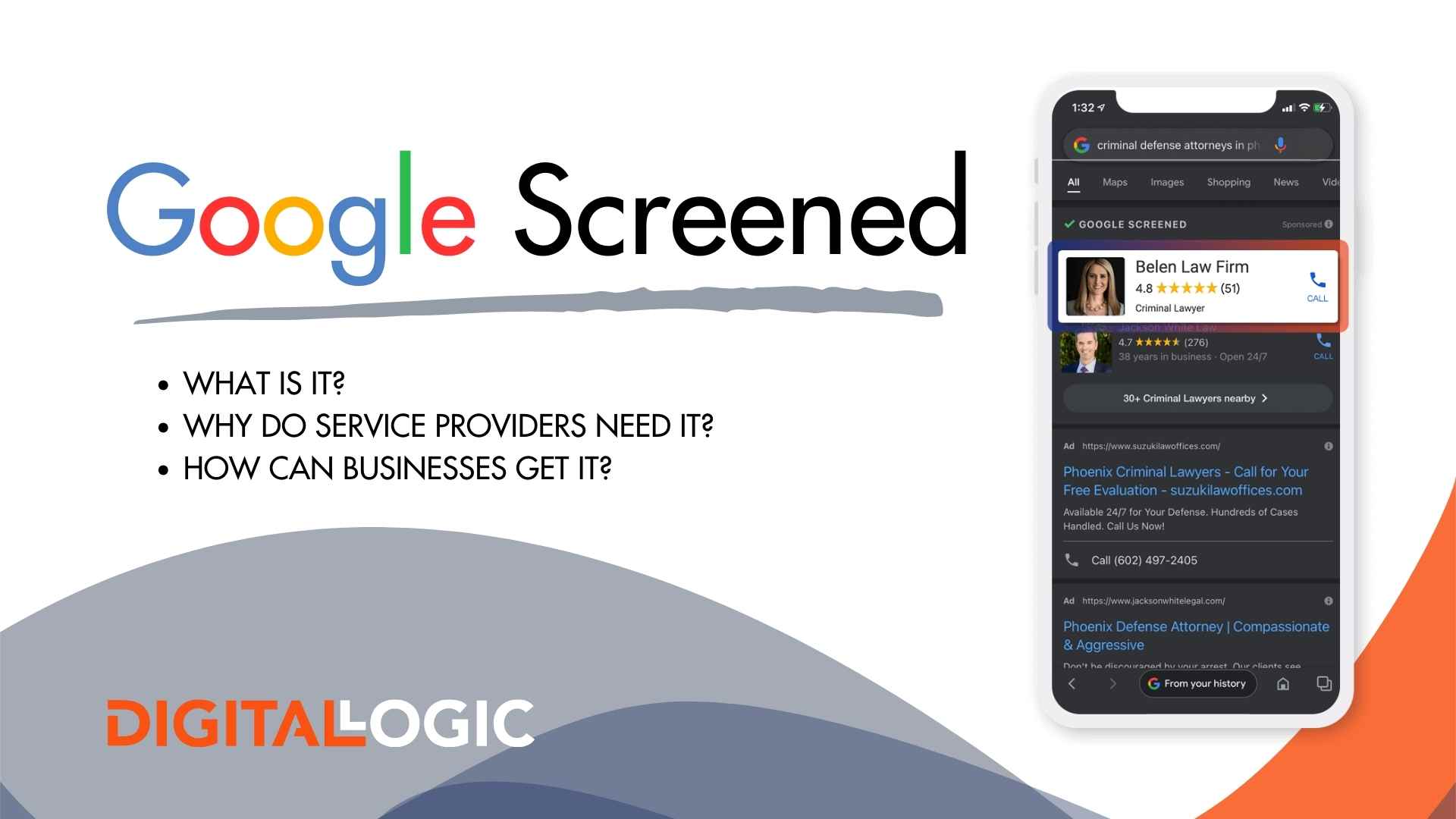In order to answer, “what is SEO and how it works?”, we’ll break down what SEO is and how SEO services can help market your business online.
Hey, we didn’t come up with the search query! You’re the one who typed it in that way. Funny how SEO works isn’t it? (pun intended.)
What is SEO and How Can SEO Help My Business?
Table of Contents
ToggleWhat is SEO?: The Definition
SEO is short for search engine optimization. This is the process of increasing both the quantity and the quality of website traffic by using techniques to increase the website’s online visibility on search engines, specifically to a preselected target audience.
This process of optimizing a website to get qualified, organic traffic may take some time, but in time, will give you valuable results that will grow exponentially.
(When you don’t have to pay for someone to visit your website, this is organic or earned traffic.)
What is SEO and How it Works: SEO Content Marketing
What Is SEO Content Marketing?
You might have heard of the term “SEO content” when building a digital marketing strategy. Honestly, it’s one of the most asked questions we receive. For a new business just getting its feet wet in the digital marketing world, SEO can be a little intimidating.
SEO content is content created for search engine optimization.
So, by definition, it is the process of creating and coding content that will help a website become more visible to its target audience.
SEO content is the foundation of any successful SEO strategy. You won’t rank for the keywords your customers are searching for without proving to search engines that your content is relevant.
We developed our SEO content beginner’s guide to answering three main questions:
- What is SEO content?
- What kinds of SEO content exist?
- What defines a good SEO content strategy?
What is SEO Content?
If you want to understand exactly what digital marketers mean by “SEO content,” we’ll need to break down the term into two parts: SEO and Content.
“SEO” refers to Search Engine Optimization. This is a process of optimizing your website so that it’s more likely to be found by people when using search engines like Google or Bing.
When you ask Google a question, what determines the answer? When you search for a company or product, what determines the listings that show?
Every search engine has an algorithm that ranks content and gives consideration as to what is the most relevant. SEO is the process of tailoring your information to make it easier for Google to “figure out” your website.
You can’t pay for Google to feel as if you are more relevant. SEO is different than SEM or search engine marketing in this way. We have a comprehensive post on SEO vs SEM.
By “content,” we mean any information such as blog posts, web pages, images, or videos that can be indexed by search engines. Indexing is done via search engine robots and crawlers that search engines use to discover your website. You’ve probably heard people refer to something as being SEO friendly.
There are three key elements to consider when producing content for your website to rank well on search engines: keyword strategy, site structure, and copywriting.
How SEO Works: Keyword Research
Knowing how and where to use keywords in your SEO content will gain you the greatest search engine visibility. Incorporating your target keywords in SEO content writing will help make your site SEO friendly. Quality content will help both Google and your visitors understand what your page is about. Both will then likely favor your SEO content over other similar websites out there.
It’s important to note, that as important as is it to tailor your content for Google crawlers, it is equally important to make sure your content meets the needs of your audience. If Google sees that your audience is “bouncing” off of your page immediately, after time, it will think, “Ok, obviously, this page isn’t answering the question we think it should.”
SEO Keyword Research Preparation
Like most of the better things in life, the brunt of the work with SEO content creation is in the preparation. Sure, you can hop on your computer and start typing away in hopes that this increases your online visibility, but more often than not, this won’t help much.
Keyword research is probably one of the most, if not the most important step in content creation. It’s important to determine what keywords you’re trying to rank for and then build a list of target keywords.
Before we dive in, you’re going to need some software. For keyword research, you can either use a standalone tool, or an all-in-one platform that covers keyword research, like SE ranking keyword finder, as well as other features like backlink monitoring, and site auditing. If you’re just starting out, it’s wise to get scalable SEO software that allows you to increase usage as your SEO efforts grow over time.
At Digital Logic, we like using the website, Ahrefs, to do keyword research. This website allows you to see monthly search volume levels for the keywords you want to target. When looking at keyword statistics, on any platform, you’ll also want to take into consideration the keyword difficulty of each word chosen. Ahrefs allows you to see the competition index on keywords so you can see how difficult it is to rank for any keyword. The competition index for keyword difficulty is on a scale of 0-100 with 100 being more difficult to rank for. Most search queries are 4 words or more. So, if a keyword seems too difficult to shoot for at first, try adding in more words for a longer search tail.

Relevant SEO Keyword Research
Create your content using relevant keywords, and the search terms people use. You want to create content that helps answer questions people ask search engines.
A good way to start the process of keyword research is to find a list of competitor sites that you want to outrank for with respect to a certain topic, look at their most popular blogs, and run those pages through Ahrefs.
Sometimes, you will find that there actually isn’t much search volume with those words, making the post not worth your time to write.
And on the flip side, sometimes you’ll see that the keyword may be too difficult to try and attain. Likewise, making this blog unfit for an ideal investment of time.
Ahrefs will allow you to see the monthly search volume for a set of keywords. You’ll need to focus on keywords that have higher search volume, with an ideal difficulty. Then, once your content is written, if you rank for those keywords, your odds of getting more traffic will increase with quality content.

3 Steps for Relevant Keyword Research
SEO keyword research involves three main steps. These include asking our listing out the following:
- What keywords do you want to rank for?
- Prioritize a list of blog posts or pages you want to outrank.
- Build an outline of each article you want to write, making sure to include subtopics related to your target search terms.
Real-Life SEO Keyword Research
Write down some of the most common questions your customers might ask when looking for the products and services you offer. An easier way to do this is to take note every time a customer asks you a question, either at your physical location or over the phone.
Keep in mind how the customer worded the question, as this will matter on the search engine results pages.
Again, how you ask questions about your industry will more than likely not be the same verbiage used by your prospects.
Online SEO Keyword Research
A good place to get decent keywords for writing SEO content is on Google for “people also searched for” after you search for your target keyword phrase.
We say this all the time: “How YOU search for you is probably not how your customer will search for you.”
With this being said, you need to write your content in the language that your customer will be using when using a search engine. That is if you want it to rank high for those queries that actually have some intent behind them.
If not, you’ll just be competing with other business owners who are trying to do the same thing you are, with none of you really getting any “ready to buy” traffic.
Keyword Research for Ready-to-Buy Traffic
For more information on this, check out our post: What is the Buyer’s Journey.
You can start by asking yourself a few very basic questions, such as:
- How much do your services cost?
- How long will it take to deliver?
- Why are you better than your competitors?
- Why is one product better than another?
- Comparisons of you vs. the competition.
Another great tool to use for keyword research is Answerthepublic.com. It gives you all the keywords related to the search.
Search Intent
Focusing on gaining organic traffic is important. In order to continue getting conversions, you’ll want to make sure that the keywords you’re writing about have intent.
But, what do we mean by this?
Here’s a simple scenario: Say you own a restaurant. You don’t want to create content around the question “How to marinate steaks?” Because even if your website gets a ton of traffic and people are super engaged in your post, what does this do for your restaurant? Nothing. Yes, this is a very basic example, and you’re probably thinking, “well duh”, but the lines tend to become a little more grey with the intricacy of the business.
If you rank for keywords that have no search intent, then it doesn’t matter if you gain an extra 10K visits a month if none of the visitors buy.
To rank within search engine results pages, while also gaining potential customers and return visitors, you’ll have to offer value above and beyond SEO content.
Don’t produce “thin” content that ranks in a search, but doesn’t provide any value to the visitor.
This is a mistake made by less experienced SEO marketers and do-it-yourself-ers. By doing so, you will risk penalization by Google’s search algorithm since it also evaluates visitor experience.
Like we said before, websites that don’t provide unique value to visitors experience higher bounce rates and lower conversion rates. Both will dampen the effects of any SEO content strategy you perform.
Why Keyword Research is Important
Like we said earlier, if you’re focused on trying to generate web traffic through search engines, it’s best to do your keyword research before you even begin writing. That way, you’ll be able to focus on using keywords with a proven search volume. We can’t say this enough:
When it comes to “What is SEO and How it Works”, remember, every SEO content strategy must begin with keyword research.
You’ll have to know what your audience is actually searching for. The goal of performing keyword research is to help you to discover the search terms you should be aiming to rank for with your SEO content.
Proper keyword research before writing your SEO content will help you develop a better perspective about which search terms people are already using.
For example, did you know that there are different volumes for the search terms “attorney” and “lawyer”? In some specialties like divorce, a ‘lawyer’ term performs better. In others, the ‘attorney’ term performs better. And performances of certain words, obviously change seasonally and over time.
How SEO Works: SEO Site Structure
One main aspect of creating successful SEO content is the structure of your website.
There are two primary reasons that make your site structure an important search engine ranking factor when creating SEO content: it helps Google “understand” your website and it decreases internal competition.
How Google Understands Your Website
The way you structure your site provides many clues to Google’s search engine about where it can find the most important content to display in relevant searches.
Your website’s structure will help determine whether a search engine can understand what your page and your website are about. The more detailed and focused your site structure, the more likely it will lead to higher rankings in Google search results.
By optimizing your SEO site structure, you’ll be able to use existing SEO content to attract backlinks from others. This will improve the odds of your other pages ranking, too. Good site structure will increase relevance and help spread some of the value from those backlinks to other pages on your site as well.
We have a comprehensive post on Web Design Best Practices.
SEO Site Structure Minimizes Internal SEO Competition
Across your website, you’ll have several articles talking about similar topics. For example, at Digital Logic, we write a lot of content about digital marketing.
If we created ten articles on the topic of “digital marketing” without focusing on many unique keywords, then Google wouldn’t be able to understand which one of them is most important, such as “What Does an SEO Company Do?” versus “Search Engine Advertising.”
If we didn’t clarify the focus of our content in our site structure, we’d be competing with our own articles on these topics in Google’s search algorithm. Solving site structure problems by using a clear internal link structure will result in higher search engine rankings.
Your site structure should look like a pyramid, with the homepage on top, including links to some of the main category pages, to explain to Google what your website content is about. Those pages should then link to even more pages that focus on sub-categories on more relevant and supporting keywords.
It’s important to constantly push internal links to the highest value pages on your site you want to rank for.
How SEO Works: Content Organization
The SEO content on your site must be organized in a logical way to inform search engine crawlers what your page will convey. Organizing your SEO content in a structured manner also helps website visitors navigate to other related pages.
The longer your visitors stay on your site, the more that Google learns about the relevance of your pages. This is done according to the search terms of the visitor’s query.
If you’re currently an SEO writer, make sure you’re sitting down. We’re gonna drop some information that is gonna sting a little:
Your audience isn’t going to read the entire article.
They’re just not. They’re gonna skim through to find what information they need. Are you ok? Let’s move on.
We tell you that, to say this: your best work needs to be above the fold. It doesn’t hurt to add a CTA (call to action) above the fold, either.
Main Types of SEO Content
SEO content can be created for many different purposes, but they all still rely on keyword research. Here are some of the main applications of SEO content for your digital marketing strategy:
Product Pages
Product pages are the main SEO content items for any online retail or e-commerce site. A good product page serves as both an SEO content factor and a landing page for search engine marketing campaigns.
Above this, your title tag and meta description are the first interaction you’ll get with your customers; make them count. Your descriptions will need to include as much long-tail keyword data as possible.
Do you see how all of our information is sectioned off into headers? We do this for two reasons:
- It groups the information, making it easier for you to read and comprehend.
- It shows Google, “Hey, these words are more important than the rest.”
Another super important task for e-commerce businesses is image alt attributes. Since you don’t have a ton of opportunity for “words”, you’ll want to give Google as much information about your business as possible, even if its on the image description. Like we said earlier, use all your resources. If you’ve got cards in your hand, play them.
A lot of e-commerce businesses copy and paste item descriptions or only alter them slightly. We understand you’re busy, and the temptation is real, or maybe you think that it will actually help your business.
IT WON’T.
Don’t do this. You want to write completely unique content, including descriptions and alt text for everything on your site.
Blog Posts
Blogging is one of the best ways to generate a regular stream of new SEO content. Because of the informal nature, blog posts are often more engaging than other drier forms of website content.
At Digital Logic, we really take blogging to heart.
We write genuine content, in-house, in order to help our customer base.
Blogging can, no doubt make your business more profitable, but it really needs to be done with the right mindset. Your audience will be able to tell, from a mile away, if you’re writing weak content just to rank or if you actually know what you’re talking about and if you actually care if it’s helpful or not.
If you write your content, with your SEO strategy in mind, and with the mindset of “I genuinely care about my audience and what this to be helpful.” This type of blogging makes blogs more likely to attract backlinks.
Writing blogs is a great method to build some domain authority for your site in the eyes of search engines. Because, after time you actually will be the authority of your industry.
Articles
News articles, interviews, and feature pieces are the most common form of SEO content. You’ll likely find them on newspaper or magazine websites, or other information resources. Articles present a great way to incorporate many relevant keywords into a long-form page on your site.
They’re also more likely to be shared, similarly to blog posts.
Lists
A list is actually another type of article on a website. If you format it as a list, it makes the SEO content easier to read by search engine crawlers, as well as your visitors. Lists are more likely to use headlines that beg to be clicked on (you’ve heard of the term “clickbait,” right?).
They’re more often displayed in the search results or populate feeds on social media networks (like “10 Ways To Reduce Your Electricity Bill” or “101 Reasons To Love Google Search”).
Guides
A guide is basically just a longer form page of content that goes into full detail on how to do something that a searcher might want to learn about (like this page!). Guides are broken down into many sections or may span several web pages. It’s a good practice to let your visitors read long-form content on a single page if they want.
You could post a full guide on your website to explain a subject within your expertise. Or you might post a summary that requires your visitors to fill out an email signup form to read the complete guide. This method is a great way to generate new leads. You should keep in mind that putting up a restriction to view your content will reduce the amount of SEO traffic you’ll be able to drive to that guide, in exchange for generating more leads.
Videos
In general, there are fewer videos hosted on the internet than pages of text, but videos can be SEO content, too. It might actually be easier to rank on the first page of Google search results for your competitive keywords if you create a video with the target keyword and topical content you’re trying to rank for.
Based on the type of website or business you run, videos might be one of the best ways to attract and reach a wider audience. You should consider making video tutorials on how to use your products. Or illustrate one of the processes that are related to your business to inform new buyers.
For example, a roofer might make a video explaining how to unclog a storm drain. This provides value to new visitors and highlights their expertise in the field.
For more information on video marketing, check out “What is a Pre Roll Ad?“
Infographics
Infographics are long-form images that contain lots of relevant data on a single subject.
They’re able to rack up tons of page views and links by including colorful charts and graphs. Since so much of your SEO content is embedded within the image, it isn’t readable as text by the search engines.
It’s important to optimize the rest of the page to make sure its relevance is noted by the algorithms. Of course, users will love it, and likely want to share your infographics with your friends, as well.
Slideshows
A slideshow is a great way to display a series of related images and develop some unique SEO content. The pictures can sometimes be more important than text for SEO.
When using graphics, especially with SEO strategy specifically in mind, make sure that you are editing the title of the image, as well as the alt text. Any time you are prompted to give any information regarding your images, you’ll want to fill out this information completely.
Glossaries
A glossary is simply a compiled index of definitions around a certain topic or industry. People seem to use Google more often than the dictionary to look up terms these days. If your business operates in a specialized or niche industry, a glossary can be a great way to generate new SEO content.
We recommend adding a glossary, but only if you are not new to marketing or SEO. You want to make sure your website already has a decent amount of content. If you don’t, the Google crawler will index all of the keywords as spam.
To get information on where to start your glossary, go through all of the content you already have available, and write down a list of keywords used on those pages. This is a good method of internally linking your site, as well.
Directories
A directory is a taxonomy of links to helpful websites and resources about a specific topic.
The most relevant and universal one locally is Google My Business. If you haven’t claimed your company in Google My Business, you probably aren’t getting indexed locally. Even though this isn’t really adding a directory to your site, it is being included in a major directory for local SEO interaction. For more information on this, look at “Four Tips to Stand Out Locally“.
These are some of the most common forms of content you’ll find on higher-ranking pages in search engines. But this list does not cover all the possibilities, as they are almost endless when it comes to SEO content.
How Does SEO Work: Content Promotion
As a business owner, we’re sure you are familiar with using every asset you have to increase conversions. The same applies to your search engine optimization campaign.
If you have a Facebook Business Account, use it. If you have a Twitter account, use it. Basically, whatever asset you have available at your disposal, use it.
You want to employ every tactic available to increase the search visibility of the new SEO content you spent time creating. Sharing your content on social networks is free and helps get your information out there to those who have already shown interest in your company.
You also want to start gaining relevant links to your content, from both internal and external sites. The more sites that link to your SEO content, the more relevant Google will understand your site to be in relation to the keywords found on the page.
What is SEO and How Does it Work: Overview
By now, you’ve probably realized that you can’t create SEO content aimlessly, in hopes that some of it will rank high for your desired keywords. Now is the time to commit to a more successful SEO content strategy for your business. Here are four steps to creating and optimizing your SEO content strategy:
Define Your SEO Content Goals.
First, you’ll need to determine your specific SEO ranking goals for your website. Are you wanting to drive traffic to make a sale on your website? Do you want to monetize your website using ads and increase traffic and clicks for more revenue? Your goals outlined in your marketing plan will determine which types of SEO content you should be focusing on.
If you’re going for product sales on your site, then your primary focus should be creating attractive, informative product pages. They should be optimized for both search engine ranking, as well as sales conversions. Another focus might be creating blog content that explains how to use your products. Then link those to the pages with relevant product pages.
Know Your Target Audience
How can you sell a product if you don’t even know who to sell it to? You obviously created your company to solve a problem. Now, think backward: who would have this problem? You can also understand your target audience by using surveys and analytics software. This can help to get a better picture of your typical visitor or client. Plan out SEO content for different buying personas, or example characters that represent website visitors or customers. Then, create SEO content that is helpful to those persons when they are using search engines to answer questions or solve a problem. Start with building a marketing plan. You’ll want to plan for your audience for all stages of the buyer’s journey.
For example, if you’re operating a B2B website that aims to attract C-level executives, then you’ll want to develop some high-level white papers. This type of SEO content can be downloaded and saved for later reading, which is helpful for busy CEOs.
If your business targets teens and young adults, you may want to focus on frequent updates using less text, but with more images or video for SEO content.
If you’re in the healthcare sector, you may have to be a little more careful releasing data, due to HIPAA, we have plenty of healthcare marketing guides to help.
Establish a Consistent SEO Editorial Calendar
After you have a clear picture of who you are targeting and why you can then generate an editorial calendar to follow for creating new SEO content. Your editorial calendar should be a schedule that dictates when you will publish new content, as well as which types of content they will be.
A content calendar will help you stick to a regular content posting schedule, as well as prevent you from rushing to choose a topic for your new content at the last minute.
Some helpful tips for creating and sticking to your editorial calendar include:
- Use a shared calendar. Share your editorial calendar with your whole digital marketing team and set up reminders for the authors and other key content developers so they will receive a notification as a deadline approaches.
- Create reliable ongoing related topics. Consider creating a new page or post for everything having to do with your business so you can get more pages indexed.
- Don’t plan too far in advance. Editorial calendars are likely to be derailed after a month or two. This is often because of changes in goals, budgets, or staff. Don’t try to plan out a schedule for the whole year and risk wasting a lot of time and effort.
Analyze and Update Your SEO Strategy Often
You’ll want to stay on top of your website’s metrics by analyzing your SEO content to find out what is working and what isn’t. Just like business changes seasonally, so will your SEO keywords. You’ll want to check back to see what’s driving conversions and focus more content around those topics.
For example, at Digital Logic, we get a lot of traffic from our post, “Geotargeting“. Since this post is more tailored to the legal industry, we made it a point to start cranking out content also geared to lawyers. Ever heard the saying, “put your best foot forward and walk in that direction”? That’s the basic concept, here.
Successful engagement metrics may include page views, backlinks, comments, social media shares, or conversion rates. These are some of the many possible key performance indicators (KPIs).
SEO and Content Analysis
Your website’s SEO content analysis should have two main goals:
- To understand your successes and repeat those strategies. Look for patterns that develop in your key performance metrics. Is your audience engaging with your videos regularly? Then give them what they want! Aim to adjust your editorial calendar as you go forward. Then you’ll be able to focus the most time and effort on SEO content that resonates with your target audience.
- To free up more time for updating and improving your other SEO content. You may have tried to optimize one of your articles for a particular keyword, but it’s still receiving more traffic for a variation of that keyword. It’s helpful to go back and optimize it again, according to the desired keyword.
SEO Agency to Help With “What is SEO and How it Works”!
Ready to learn more about our search engine optimization services? Digital Logic offers a free, no-obligation consultation.






